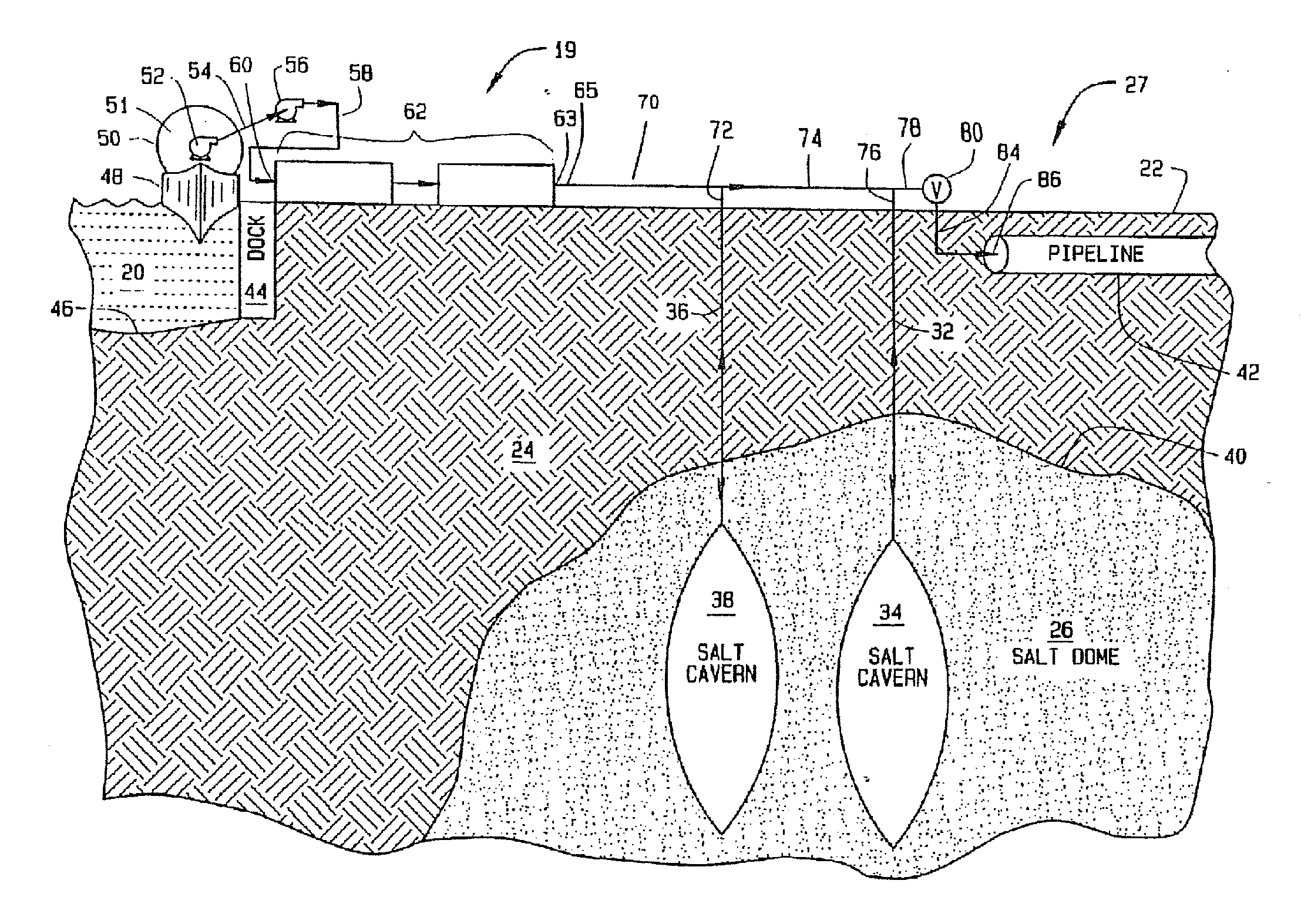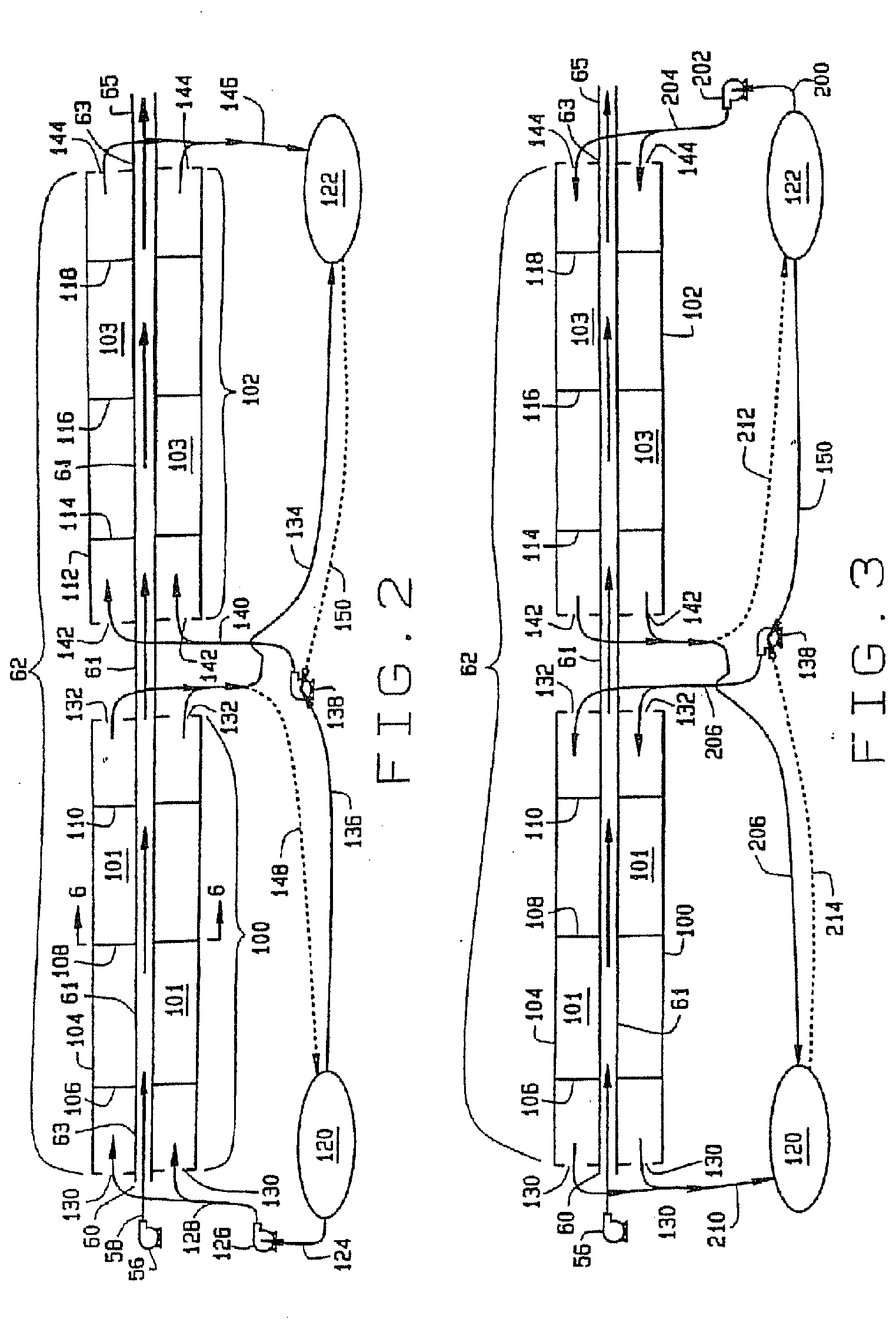LNG receiving terminal that primarily uses compensated salt cavern storage and method of use
a technology of receiving terminal and salt cavern, which is applied in the direction of container discharging methods, water supply installation, container filling under pressure, etc., can solve the problems of lng transport ships costing more than $100,000,000 to build, stranded gas produced concurrently with crude oil is often burned at a flare, and the lng transport ship may take 12 hours or more to pump lng
- Summary
- Abstract
- Description
- Claims
- Application Information
AI Technical Summary
Benefits of technology
Problems solved by technology
Method used
Image
Examples
Embodiment Construction
deal with “uncompensated” salt caverns and examples 5 and 6 deal with “compensated” salt caverns which require a compensating liquid.
[0068]EXAMPLE #1. This hypothetical example is designed to give broad operational parameters for the Bishop One-Step Process conducted at or near dockside as shown in FIG. 1. A number of factors must be considered when designing the facility 19 including the type of cold fluid and warmant that will be used. Conventional instrumentation for process measurement, control and safety are included in the facility as needed including but not limited to: temperature and pressure sensors, flow measurement sensors, overpressure reliefs, regulators and valves. Various input parameters must also be considered including, pipe geometry and length, flow rates, temperatures and specific heat for both the cold fluid and the warmant. Various output parameters must also be considered including the type, size, temperature and pressure of the uncompensated salt cavern. For...
PUM
| Property | Measurement | Unit |
|---|---|---|
| pressure | aaaaa | aaaaa |
| pressures | aaaaa | aaaaa |
| temperatures | aaaaa | aaaaa |
Abstract
Description
Claims
Application Information
 Login to View More
Login to View More - R&D
- Intellectual Property
- Life Sciences
- Materials
- Tech Scout
- Unparalleled Data Quality
- Higher Quality Content
- 60% Fewer Hallucinations
Browse by: Latest US Patents, China's latest patents, Technical Efficacy Thesaurus, Application Domain, Technology Topic, Popular Technical Reports.
© 2025 PatSnap. All rights reserved.Legal|Privacy policy|Modern Slavery Act Transparency Statement|Sitemap|About US| Contact US: help@patsnap.com



